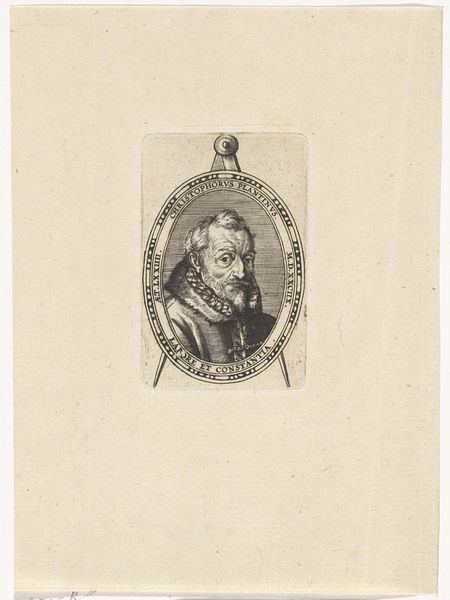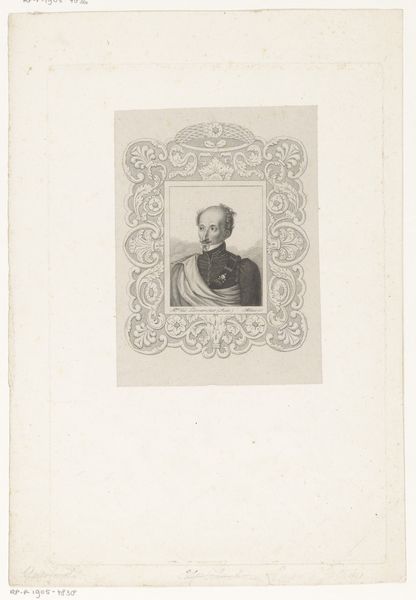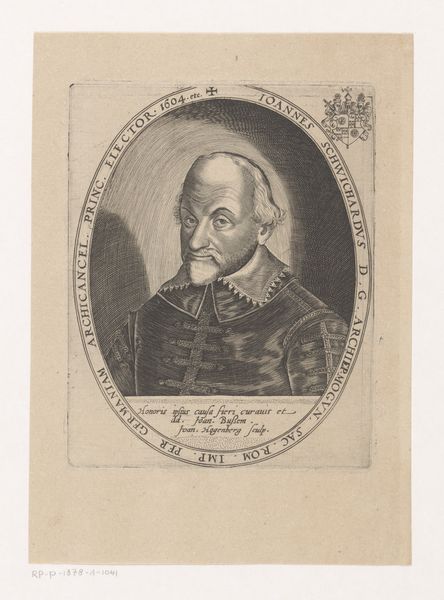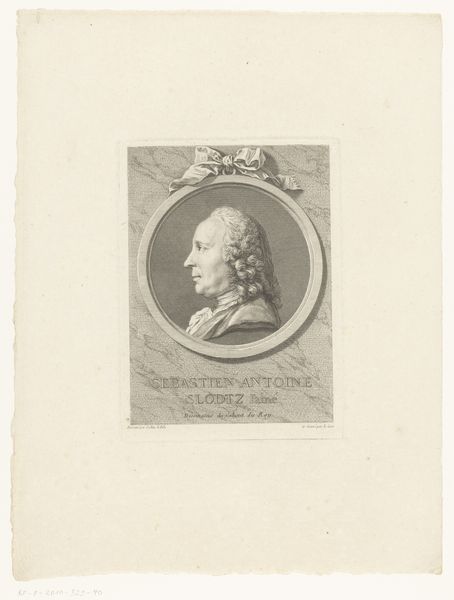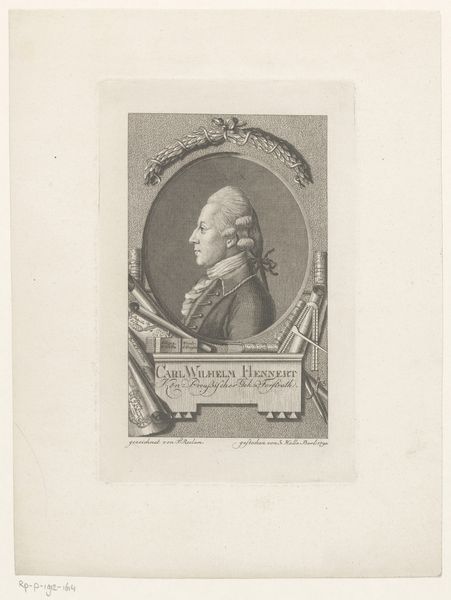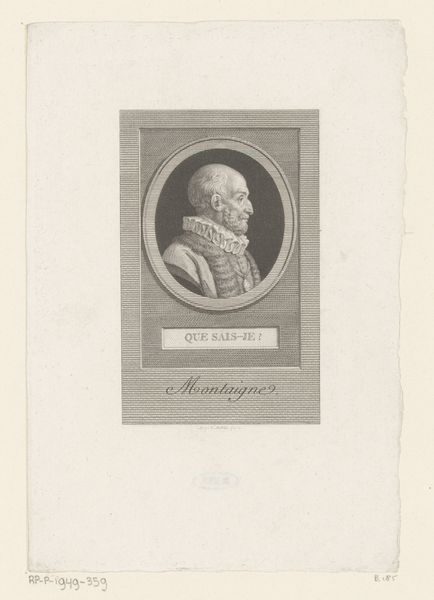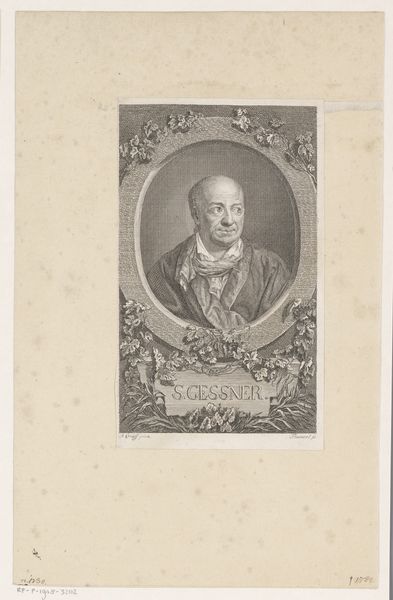
print, paper, ink, engraving
# print
#
old engraving style
#
paper
#
11_renaissance
#
ink
#
history-painting
#
italian-renaissance
#
engraving
Dimensions: width 82 mm, height 112 mm
Copyright: Rijks Museum: Open Domain
Curator: Adriaan Boon created this piece, "Portret van Scaevola Sammarthanus," in 1579. It's an engraving, done with ink on paper, currently residing at the Rijksmuseum. Editor: The first thing that strikes me is the ornate detail – the ruff around his neck, the floral frame, everything feels precise, almost austere despite the clear attempts at embellishment. Curator: Considering it's an engraving, a print, the meticulousness makes sense. Each line would have to be carefully etched into the metal plate. Think of the labor involved in reproducing this image! These prints allowed for wider circulation of portraits of important figures. Sammarthanus was a noted humanist and poet, and engravings like these served to immortalize him. Editor: The frame itself, though, seems laden with classical symbols – laurel leaves, perhaps? Definitely meant to evoke prestige, aligning Sammarthanus with the traditions of ancient scholarship. But look closer—those flowers! There's something softer, almost fragile, amidst all that academic seriousness. Curator: The contrast is interesting. The act of engraving itself is quite rigid and controlled, yet that's balanced by the symbolic language—both the academic implications, but as you say, the softer aspects. Note Boon's signature there. It subtly advertises the maker’s skill. Editor: I wonder, too, about the placement of the text encircling Sammarthanus. It almost creates a halo effect. Clearly, this is more than just a record; it’s an assertion of his importance, bordering on idealization. Is the visual language borrowing from religious iconography to elevate his status? Curator: Potentially, although that also depends on who's buying it. Its meaning shifts with different contexts and uses. Maybe for some, this simply functions as a well-made likeness or a collector's item; the market dictates value and interpretation. Editor: All that symbolic encoding paired with the mechanics of reproduction reveals so much about Renaissance aspirations. It speaks to a world deeply invested in images as carriers of status, intellectual heritage, and perhaps even a longing for immortality. Curator: Exactly! Focusing on the object itself – the print, the paper, the ink, the meticulous labor—lets us peel back layers of meaning attached through cultural consumption. Editor: And focusing on the symbolism, we’re seeing how they build lasting meanings, projecting prestige through meticulously crafted detail. Curator: Thank you. Editor: It was insightful.
Comments
No comments
Be the first to comment and join the conversation on the ultimate creative platform.


